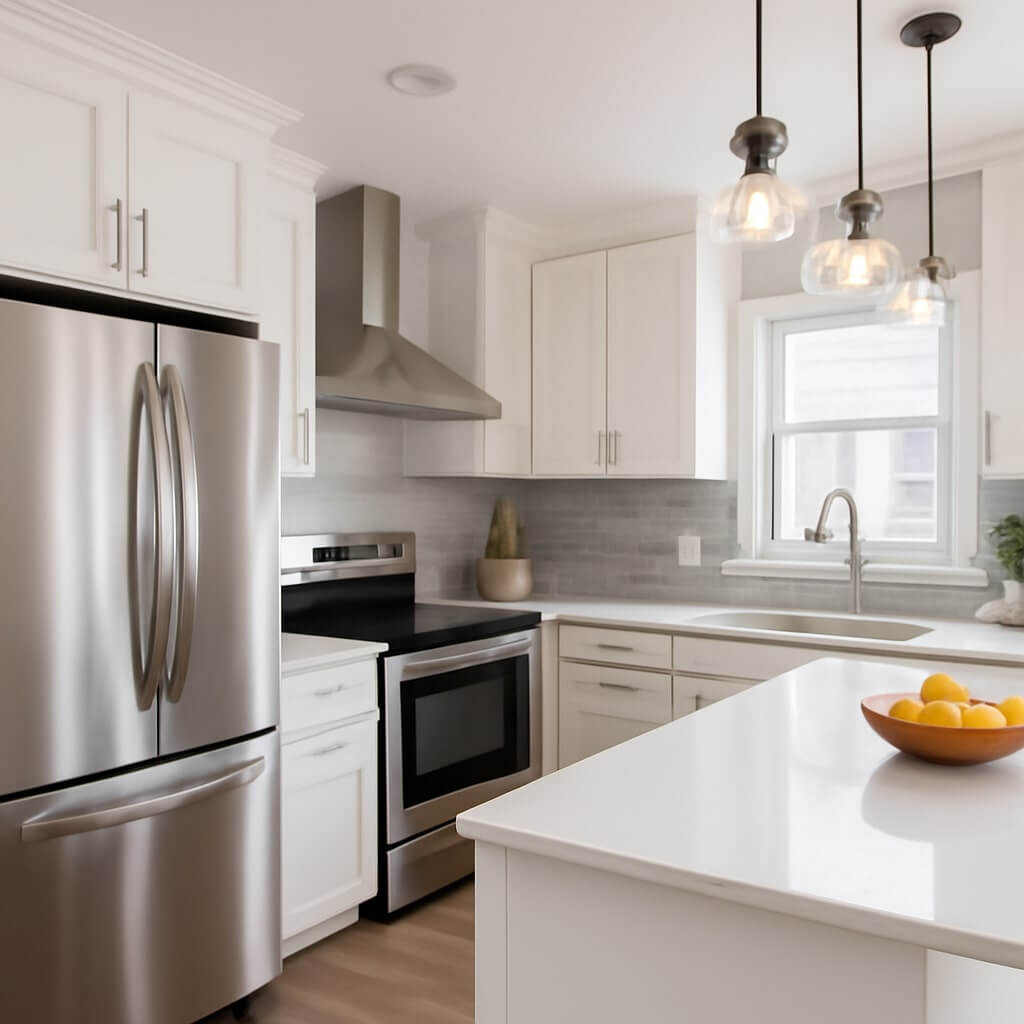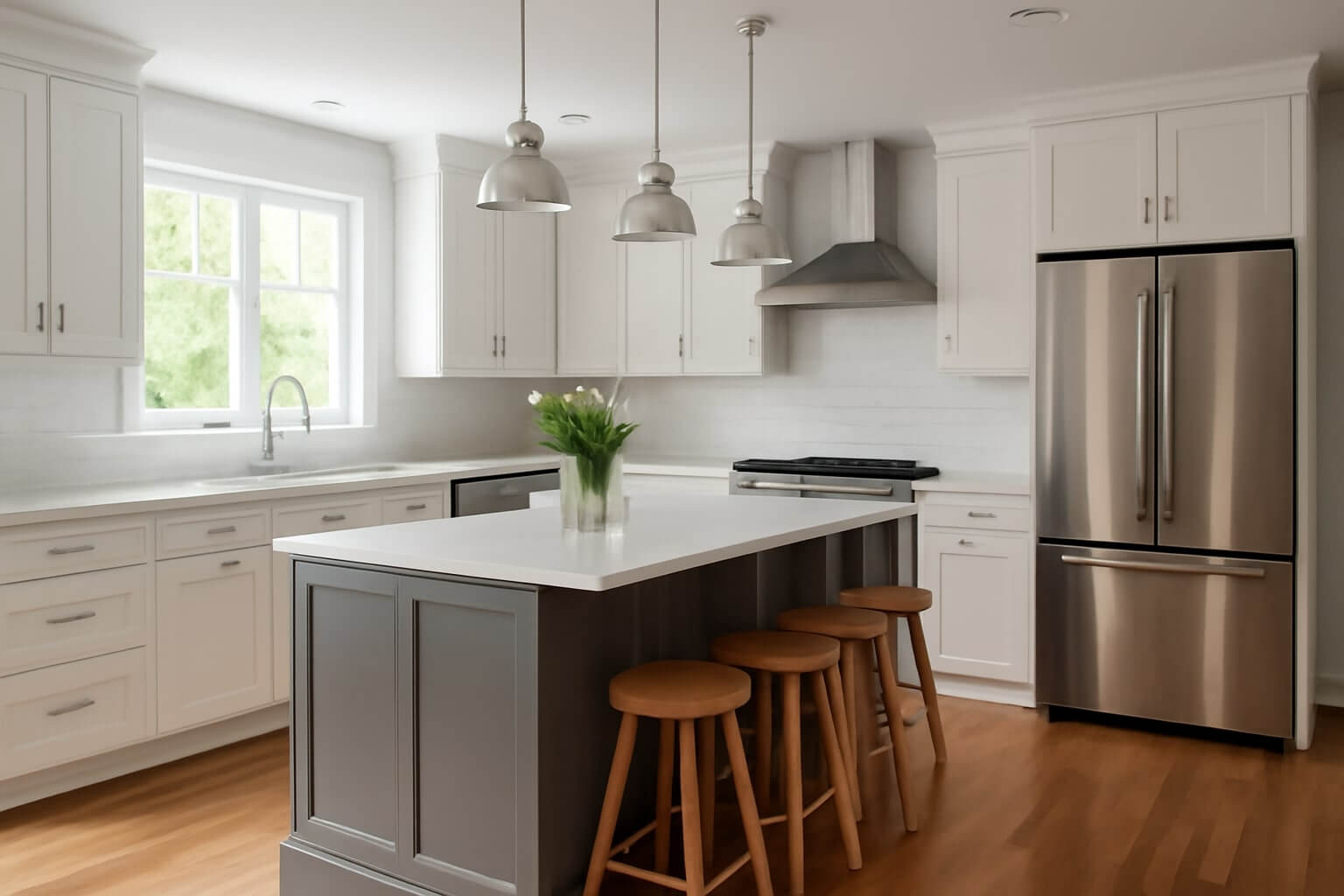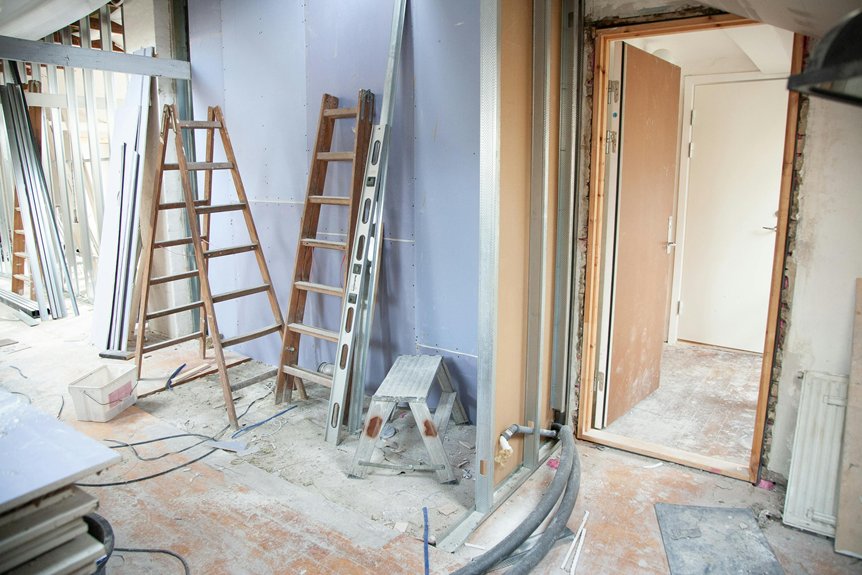When remodeling a kitchen, understanding the factors that influence electrical costs is vital for budgeting effectively. You’ll need to take into account appliance selection, wiring upgrades, and lighting design, among others. Each choice you make can greatly impact the overall expenses. As you weigh these elements, it’s essential to recognize how they interconnect and affect your project’s financial outcome. The implications of your decisions may not be as straightforward as they seem.
Key Takeaways
- Appliance selection impacts energy costs; opting for ENERGY STAR models can reduce long-term expenses.
- Wiring upgrades to meet local codes ensure safety and prevent costly penalties.
- The complexity of installation, such as repositioning appliances, can raise labor costs significantly.
- Choosing energy-efficient lighting fixtures lowers overall electrical consumption and enhances performance.
- Location and layout changes may require additional circuits, increasing both material and labor expenses.
Appliance Selection and Energy Requirements
When planning your kitchen remodel, the choice of appliances can greatly impact both your budget and energy consumption.
Selecting appliances with high appliance efficiency ratings guarantees you minimize energy use without sacrificing performance. Look for ENERGY STAR certified models, which often provide superior energy ratings compared to standard options.
These ratings help you predict long-term operational costs, allowing for more informed decisions. Additionally, consider the specific energy requirements of each appliance, as some may demand extensive electrical capacity.
Wiring Upgrades and Code Compliance
As you begin your kitchen remodel, ensuring that your wiring meets current codes and standards is essential for both safety and efficiency.
Upgrading wiring materials, like using copper instead of aluminum, enhances conductivity and reduces fire risks. Familiarize yourself with local code regulations, as they dictate wire gauge, circuit load, and outlet placement. Non-compliance can lead to costly penalties and safety hazards.
Additionally, consider future needs; installing additional circuits may prevent overloading. Partner with a licensed electrician to assess your current system and implement necessary upgrades, ensuring your kitchen not only looks great but functions safely and efficiently.
Lighting Fixtures and Design Choices
Upgrading wiring opens the door to advanced lighting fixtures and design choices that can considerably impact the overall cost and functionality of your kitchen remodel.
Choosing energy-efficient fixtures can enhance fixture efficiency, reducing long-term electrical costs. Incorporating ambient lighting creates a welcoming atmosphere while strategically placed task lighting improves visibility for cooking and food preparation.
Opt for energy-efficient fixtures to lower costs, enhance ambiance, and improve cooking visibility with well-placed task lighting.
When selecting fixtures, consider their lumen output and wattage, as these factors directly influence energy consumption. Balancing aesthetics with efficiency guarantees your design choices not only elevate the kitchen’s look but also align with your budget and energy goals.
Prioritize quality for peak performance and longevity.
Labor Costs and Installation Complexity
Although you may focus on the aesthetic aspects of your kitchen remodel, labor costs and installation complexity can importantly affect your budget.
Efficient labor practices directly influence overall costs; higher labor efficiency often correlates with reduced expenses.
Complex installation techniques, such as integrating advanced lighting systems or relocating outlets, can greatly increase labor hours and costs.
It’s essential to assess the skill level required for each task, as specialized installations may necessitate hiring experienced electricians.
Location and Layout Changes
Location and layout changes in your kitchen remodel can greatly impact electrical costs.
Adjusting your kitchen footprint and enhancing electrical accessibility often necessitate additional wiring, which increases expenses.
Consider these factors:
- Repositioning appliances may require new outlets.
- Creating an open floor plan can complicate existing wiring routes.
- Installing an island necessitates dedicated circuits.
- Moving sinks or dishwashers impacts plumbing and electrical integration.
- Adding lighting fixtures increases the need for circuits.
Each of these changes can lead to higher electrical costs, so it’s essential to plan meticulously and consult professionals during your remodel.
Conclusion
In summary, understanding the key factors influencing electrical costs in your kitchen remodel can lead to more informed decisions. By choosing energy-efficient appliances, ensuring wiring upgrades meet current codes, selecting appropriate lighting, considering labor complexities, and planning for layout changes, you can effectively manage expenses. Each element plays an essential role in not only your budget but also the overall efficiency and safety of your kitchen. Prioritize these aspects to optimize your remodeling project.




